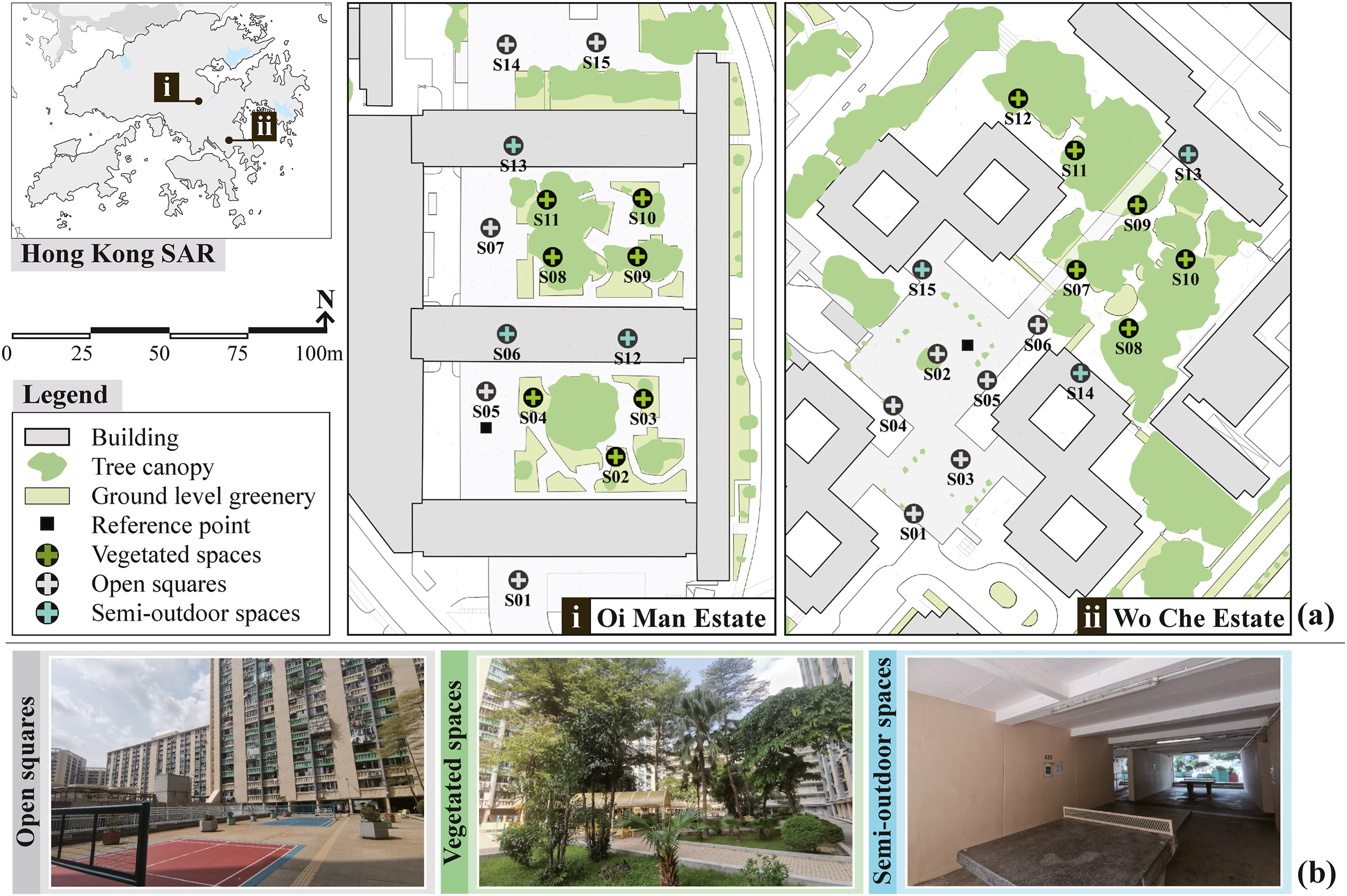Microclimate and its influencing factors in residential public spaces during heat waves: An empirical study in Hong Kong
Published in Building and Environment, 2023
Recommended citation: Li, Y., Ouyang, W., Yin, S., Tan, Z., & Ren, C. (2023). Microclimate and its influencing factors in residential public spaces during heat waves: An empirical study in Hong Kong. Building and Environment, 110225. https://doi.org/10.1016/j.buildenv.2023.110225
Creating thermally comfortable living environment under the new normal of heat waves requires pertinent knowledge as references. In subtropical residential areas, various types of public spaces exist, whose microclimate differences during heat waves, as well as their relationship with surrounding building and greenery characteristics, have not been systematically investigated. We therefore evaluated microclimate performances in three typical types of residential public spaces, i.e., open squares, vegetated spaces, and semi-outdoor spaces, and their relationship with surrounding built environment during summertime heat waves. Field measurement of microclimate parameters was conducted in two selected public housing estates in Hong Kong, followed by calculation of thermal comfort indices. Their relationship with building and greenery factors was analyzed. Results show inconsistent patterns in different microclimate variables among three types of spaces across different times of the day, while thermal comfort conditions in the three types of spaces are significantly different. In vegetated spaces and open squares, three-dimensional factors play dominant roles in determining microclimate and thermal comfort condition, with sky view factor (SVF) contributing the most. We detected key SVF threshold for effective thermal comfort enhancement around 0.4, based on which we discussed building and greenery optimization in similar urban context from a point-based SVF perspective and its potential application in practice. In semi-outdoor spaces, two-dimensional land-cover composition contributes greater than three-dimensional factors. This study provides empirical evidence on thermal performance of residential public spaces, which can assist practitioners in achieving adaptation to heat waves in high-density urban contexts in subtropical regions.

(a) Locations of study sites and measuring points, and (b) typical examples of three types of public spaces.

Detected break points by piecewise regression between microclimate parameters, thermal comfort indices and SVF in outdoor spaces. (Note: Numbers at the right bottom are detected breakpoints.)
